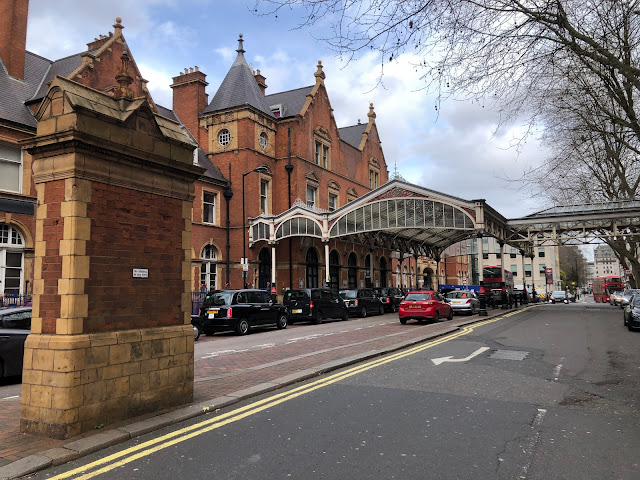I had never been to Marylebone. In fact, I’d never even seen it, tucked back as it is from the bus routes along the Edgware Road between Euston and Paddington. This, in spite of my fairly substantial length of time spent further up the line as a volunteer on the modern GCR. I was visiting HQ for the first time to pay my respects to Watkins, Fay, et alia, and the extraordinary vision - not just for deciding to plonk yet another main line linking the north with London alongside all the others, but as a means of reaching the continent by a rail tunnel, an idea that was decades ahead of its time, as it turned out.
Compared to the other London termini, Marylebone is a modest
affair, yet its red brick façade is elegant and pleasing to the eye. From our
hotel, we had a good view not just of the porte cochere with its wrought
ironwork and glass canopy, but also of the direct link undercover to the rear
entrance of what is now the Landmark Hotel. This is the former Hotel Grand
Central, opened in 1899 at the same time as the railway, itself. It faces south
onto the main road and in so doing both dwarfs and partially hides the station
frontage. You can pay a lot for B&B just over the road from where we were
staying. I guess you get a lot more for your money than the attention of a
uniformed doorman, but that question may have to lie unanswered for the time
being.
Marylebone had all the bustle you would expect of a modern London destination, with a variety of food outlets and other services. Trains out of here are largely provided by Chiltern Railway to the West Midlands, in addition to the suburban commuter services north west of the capital and to those prosperous market towns beyond, in that hilly, red kite countryside.





I worked at the Railways Board HQ there (222 Marylebone Road) for a little over a year before moving to the LMR HQ at Euston House on another promotion. There was a masonic temple in the bowels of 222 (quite a few of the staff there were freemasons), but I never got in to see it.
ReplyDelete